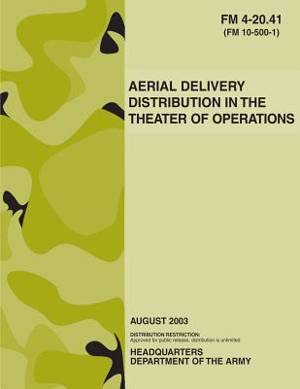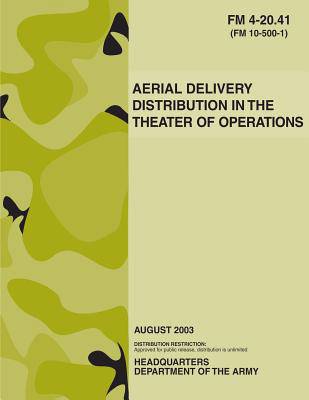
- Afhalen na 1 uur in een winkel met voorraad
- Gratis thuislevering in België vanaf € 30
- Ruim aanbod met 7 miljoen producten
- Afhalen na 1 uur in een winkel met voorraad
- Gratis thuislevering in België vanaf € 30
- Ruim aanbod met 7 miljoen producten
Zoeken
Aerial Delivery Distribution in the Theater of Operations (FM 4-20.41)
Department Of the Army
Paperback | Engels
€ 16,95
+ 33 punten
Omschrijving
This manual combines the three facets of aerial delivery, airdrop, airland, and sling load, in one overarching distribution-related manual. The references to airland operations included in this manual provide more complete information. Detailed information about airland operations can be found in the applicable joint and Army (Transportation Corps proponent) doctrinal manuals. This manual addresses the full scope of the three related and commingled facets of aerial delivery doctrine. This is an umbrella manual for the maneuver unit commander. It addresses the basic principles of aerial delivery distribution, the advantages and disadvantages of each facet, specific airland/airdrop related units, request procedures, and recovery and evacuation of aerial delivery equipment. However, the scope will be limited to aerial delivery as it relates to sustainment, not the operational use of aerial delivery assets for personnel/unit moves. This manual documents current aerial delivery doctrine and broadens the scope to address aerial delivery distribution as it applies to, and operates within, the overall Army distribution system. It amplifies the flexibility, agility, and force multiplier potential added to the Army distribution system by aerial delivery. This manual recognizes the ongoing Army Transformation and addresses how aerial delivery will be affected by these changes. It also highlights new equipment and forthcoming technologies that will enhance aerial delivery capability. Finally, this manual addresses major changes that must occur within the aerial delivery system to allow it to reach its full potential within the framework of the new environment.
Specificaties
Betrokkenen
- Auteur(s):
- Uitgeverij:
Inhoud
- Aantal bladzijden:
- 62
- Taal:
- Engels
Eigenschappen
- Productcode (EAN):
- 9781480008304
- Verschijningsdatum:
- 28/09/2012
- Uitvoering:
- Paperback
- Formaat:
- Trade paperback (VS)
- Afmetingen:
- 216 mm x 279 mm
- Gewicht:
- 167 g

Alleen bij Standaard Boekhandel
+ 33 punten op je klantenkaart van Standaard Boekhandel
Beoordelingen
We publiceren alleen reviews die voldoen aan de voorwaarden voor reviews. Bekijk onze voorwaarden voor reviews.











